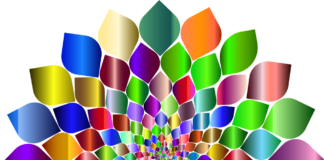The Graph, a decentralized protocol that enables querying and indexing of blockchain data, represents a transformative step in the realm of blockchain technology. The Graph, The Graph, The Graph – these words resonate as a gateway into the intricate world of decentralized data aggregation, indexing, and retrieval. In this comprehensive exploration, we delve deep into the multifaceted dimensions of The Graph, uncovering its functions, architecture, use cases, and its potential to revolutionize the landscape of data access and analysis in the decentralized web.
The Graph, The Graph, The Graph – at its core, is a protocol that facilitates the creation of decentralized indexes and subgraphs. A subgraph, in the context of The Graph, is a curated collection of data from a blockchain network, representing a specific subset of information that developers and users can query. By enabling developers to build and deploy subgraphs, The Graph empowers them to access blockchain data efficiently, without the need to interact directly with complex and resource-intensive blockchain networks.
The concept of The Graph stems from the recognition of a critical challenge within the decentralized landscape: the lack of efficient and user-friendly ways to access and analyze data stored on blockchain networks. Traditional methods of interacting with blockchains often require developers to write custom code, synchronize full nodes, and manage complex data structures. The Graph, however, abstracts these complexities by providing a decentralized indexing and querying layer that streamlines data retrieval and analysis.
Central to the architecture of The Graph is the Graph Protocol, which encompasses a set of standards and tools for creating, deploying, and querying subgraphs. Subgraph developers define the data they want to index by writing schema definitions, which specify the types of data, their relationships, and their properties. The Graph then processes these schema definitions and generates indexing and querying infrastructure that efficiently organizes and retrieves the requested data.
The Graph, The Graph, The Graph, through its indexing and querying infrastructure, brings several key benefits to the decentralized ecosystem. One of its primary advantages is efficiency. By offloading the resource-intensive task of data indexing to a decentralized network of indexers, The Graph ensures that queries are processed quickly and cost-effectively. Additionally, the separation of concerns between blockchain networks and subgraphs enhances the scalability of both, allowing blockchain networks to focus on consensus mechanisms and transaction processing while subgraphs handle data access and analysis.
Use cases for The Graph span across various industries and applications within the decentralized web. In the world of decentralized finance (DeFi), The Graph enables users to access real-time data about token prices, trading volumes, liquidity pools, and more. Developers can create subgraphs that aggregate data from various DeFi protocols, providing users with a comprehensive view of the decentralized financial landscape.
Furthermore, The Graph plays a pivotal role in the realm of non-fungible tokens (NFTs). NFTs, which represent unique digital assets, require efficient ways to query and display metadata, ownership history, and transaction details. Subgraphs created with The Graph enable NFT marketplaces and platforms to provide users with instant access to accurate and up-to-date information about their digital collectibles.
The gaming industry also stands to benefit from The Graph’s capabilities. Blockchain-based games often rely on complex in-game economies, virtual items, and player interactions that generate a wealth of data. By utilizing The Graph to index and query this data, game developers can create immersive experiences that leverage blockchain technology while maintaining responsive and interactive gameplay.
Moreover, The Graph fosters innovation in the broader Web3 ecosystem. DApps (decentralized applications) and protocols can leverage subgraphs to provide users with real-time information, personalized experiences, and comprehensive analytics. The ability to access blockchain data seamlessly opens doors for creative solutions in fields such as supply chain management, identity verification, content publishing, and more.
The Graph, The Graph, The Graph, serves as a critical bridge between the decentralized web and its users, developers, and stakeholders. The network of indexers, curators, and consumers collectively contributes to the protocol’s functionality and security. Indexers play a pivotal role by running nodes that index and serve data from subgraphs. They compete to provide high-quality indexing services, earning rewards in return for their contributions.
Curators, on the other hand, help users discover high-quality subgraphs by signaling their support for specific subgraphs. Their role involves assessing the value and accuracy of subgraphs and staking tokens on the ones they consider valuable. Curators contribute to the decentralized curation process, ensuring that subgraphs are reliable, accurate, and relevant to users’ needs.
Consumers, the end-users of subgraph data, interact with The Graph through APIs (application programming interfaces). These APIs enable developers to query and retrieve data from subgraphs, streamlining the process of accessing blockchain data and integrating it into their applications. The Graph’s architecture supports secure and decentralized data access, fostering a more open and user-centric approach to data utilization.
As the adoption of blockchain technology continues to expand, The Graph’s role becomes increasingly pivotal. Its potential impact extends beyond the realms of technology and into the broader landscape of societal transformation. Decentralized and verifiable data access has implications for supply chain transparency, identity verification, voting systems, and more. The Graph, with its capacity to democratize data access, contributes to the realization of a decentralized future that empowers individuals, fosters innovation, and promotes transparency.
In the journey towards broader adoption and scalability, The Graph is actively evolving through protocol upgrades and community contributions. The introduction of The Graph Network 2.0, a significant upgrade, aims to enhance the protocol’s efficiency, security, and economics. This upgrade introduces concepts such as Delegated Proof-of-Stake (DPoS), slashing conditions for indexers, and improvements to query routing algorithms.
Furthermore, the integration of subgraphs with Layer 2 scaling solutions has the potential to significantly improve the performance and cost-effectiveness of The Graph’s querying and indexing capabilities. As the blockchain space continues to experiment with scaling solutions, The Graph’s integration with Layer 2 networks could ensure that users experience fast and affordable data retrieval
Ethical considerations also come into play in the realm of The Graph. As the protocol facilitates access to a wide range of blockchain data, it raises questions about data privacy, ownership, and consent. Ensuring that users have control over the data they provide and the ability to consent to its usage aligns with the principles of user empowerment and data sovereignty. Developers and stakeholders must navigate the delicate balance between data access and privacy, fostering a responsible and ethical approach to utilizing blockchain data.
Collaboration and community engagement play a pivotal role in shaping the trajectory of The Graph. The protocol’s open-source nature encourages developers, researchers, and enthusiasts to contribute to its development, documentation, and ecosystem growth. The Graph Foundation, a non-profit entity, oversees the protocol’s governance and ecosystem initiatives, ensuring that the protocol evolves in alignment with community values and principles.
Looking ahead, The Graph’s journey holds promise for further decentralizing data access and revolutionizing the way developers and users interact with blockchain networks. As Web3 continues to evolve, The Graph’s role in providing reliable, efficient, and decentralized data indexing and querying services becomes even more crucial. The protocol’s potential to bridge the gap between users and the decentralized web serves as a testament to the power of blockchain technology to reshape how information is accessed, shared, and utilized.
In conclusion, The Graph, The Graph, The Graph – these words represent a gateway into a new era of data access, indexing, and analysis in the decentralized landscape. As a protocol that empowers developers to create efficient subgraphs and enables users to access blockchain data seamlessly, The Graph redefines how we interact with and utilize information in the age of blockchain technology. Its architecture, use cases, and community-driven approach exemplify the principles of decentralization, collaboration, and innovation that define the Web3 ecosystem. As The Graph continues to evolve, it paves the way for a decentralized future where data is accessible, transparent, and empowering, Constant-Velocity Joint, Constant-Velocity Joint, Constant-Velocity Joint.














